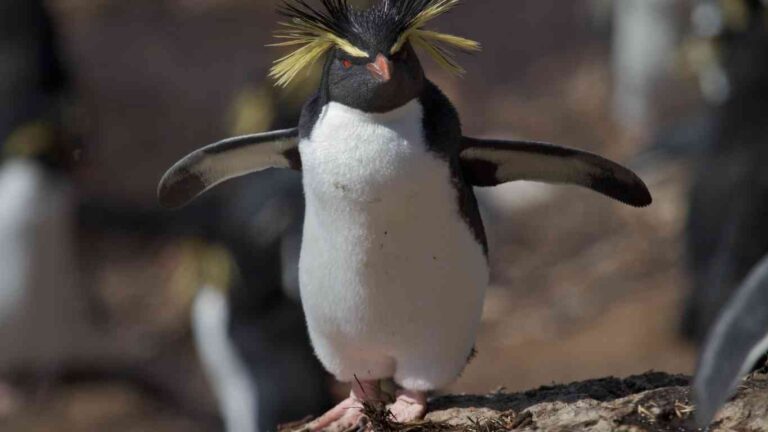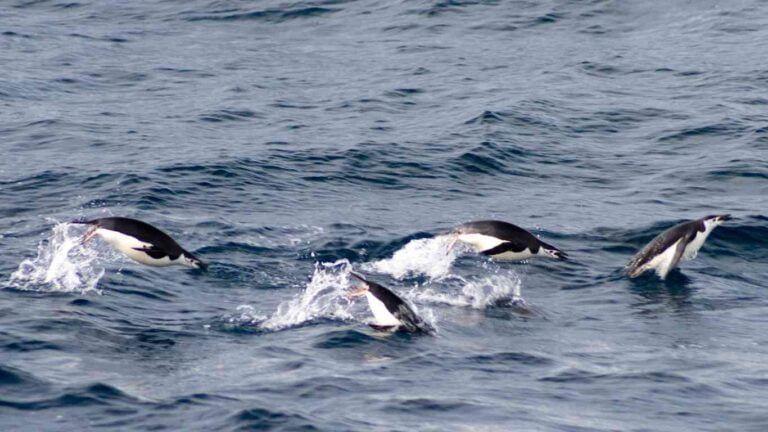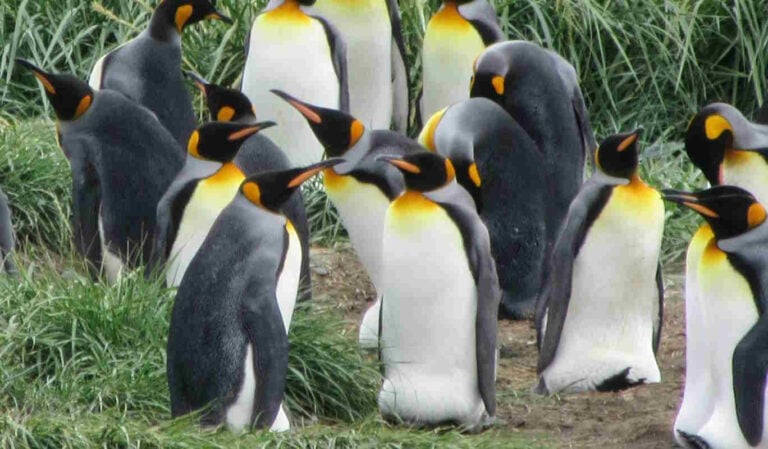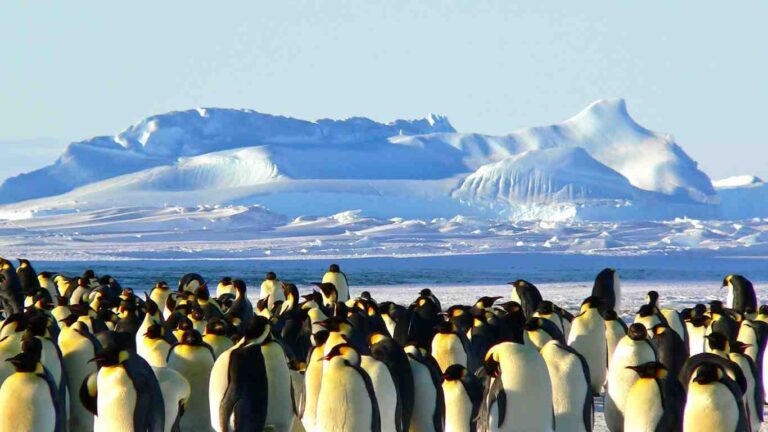Do Penguins Live in Igloos?
When picturing penguins, many people imagine them huddled together in an igloo, sheltering themselves from the harsh Antarctic weather.
However, the reality is quite different. Lets find out, whether penguins actually live in igloos and dive into their natural habitats and nesting behaviors.
Do Penguins Live in Igloos?
Naturally, penguins don’t live in igloos because they can’t build them. They live in burrows or nests on land or ice.
Penguins live in the Antarctica and sub-Antarctic regions, where they typically make their nests on rocky coastlines or in burrows to protect themselves from the harsh environment.
Igloos are structures traditionally made by the Inuit people of the Arctic regions in Canada, Greenland, and Alaska.
They are temporary shelters during hunting and fishing trips. They are dome-shaped and built using blocks of hard packed snow called neve for insulation.
Inuit people make igloos by selecting compact, wind packed snow, cutting snow blocks, laying the foundation, and creating a dome shape.
The interior is hollowed out for seating and sleeping, and a small entrance tunnel is often built to keep the wind and cold out.
The concept of igloos stems from the well-known Arctic culture but has no direct relevance to penguins.
However, an Iranian architect Sajjad Navidi has proposed a design concept called Penguin Protection System to preserve penguin habitats and combat the impact of global warming on polar ice.
This design includes a warming floating igloo for penguins to live and breed, as well as a wave-powered mechanism that cools sea ice beneath the water.
Another group of conservationists working on the African Penguin Nest Project have designed ceramic nests resembling small igloos.
These nests have been placed in five penguin colonies, including Bird Island, off the coast of South Africa.
These specially designed igloo look like nests help cool the penguins, maintaining an internal temperature about one degree Celsius lower than the penguins’ body temperature at rest.
All of these projects are imitations of igloos designed to protect penguins, rather than real ice block igloos.
Penguins generally live in frigid climates and rely on their unique adaptations to survive. Instead of building shelter, penguins use various methods to protect themselves and their young ones.
Some species create nesting burrows in the ground or in rocky crevices, while others make nests with pebbles or vegetation.
These nests help insulate the eggs and provide protection from predators and extreme weather conditions.
Penguins have their own extraordinary ways of thriving in their natural environments, separate from the concept of igloos.
Cartoons, films, and books often commonly depict penguins with arctic animals, igloos, and Christmas motifs for a playful winter scene, despite this being scientifically inaccurate.
Are Igloos the Natural Habitats of Penguins?
Igloos are not the natural habitats of penguins. Penguins primarily inhabit regions that have a cold climate, such as Antarctica, South Georgia, and the southernmost parts of South America and Africa.
These regions provide a variety of natural habitats for penguins, including rocky shores, pebble beaches, and icebergs. They rely on their unique adaptations to survive in these environments.
Final Thoughts
Although the idea of penguins living in igloos may be appealing and widely portrayed in media, it is important to understand that penguins have their unique habitats and nesting behaviors.
Their natural environments offer various opportunities for them to thrive and adapt to the challenges they face.
While igloos remain an iconic symbol of survival in Arctic regions, penguins have their own extraordinary ways of building their lives in the colder parts of the world.
(Featured image by Eli Duke on Flickr; License: CC BY-SA 2.0 Deed)







